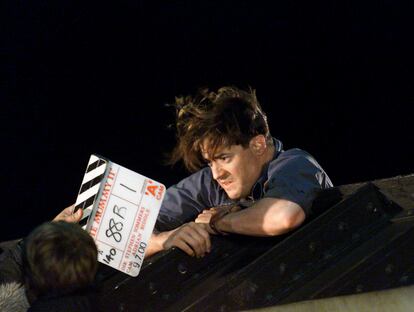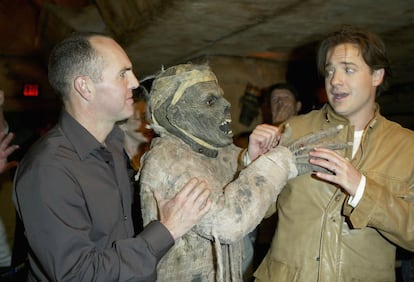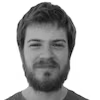Mummies, anachronisms and bisexual awakenings: The ‘pivotal blockbuster of the nineties’ that resurrected adventure cinema
Based on the Universal horror classic, ‘The Mummy’, starring Brendan Fraser and Rachel Weisz, became an unexpected hit 25 years ago

“Death, eternal punishment, for anyone who opens this casket.” That’s the inscription on the tomb of Egyptian high priest Imhotep in the 1932 movie The Mummy, and it’s a warning that must have stuck with Universal Pictures. Beyond the 1959 film by British director Terence Fisher, the studio seemed reluctant to bring back one of its most classic monsters, alongside Dracula (1931), Doctor Frankenstein (1931) and The Invisible Man (1933). There were several discussions about doing a remake, with directors such as George A. Romero, Clive Barker or Joe Dante at the helm, but none came to fruition. Until someone proposed a new twist: turning it into an Indiana Jones-style adventure film.
Released 25 years ago in 1999, The Mummy was more than a mere remake: it marked the beginning of its own saga, giving rise to two sequels, an even longer spin-off franchise (The Scorpion King, which began in 2002, and currently includes five movies) and a children’s cartoon series. Seen today, it’s easy to understand, why the movie — despite the poor reviews — was a blockbuster hit, raking in more than $400 million in cinemas worldwide. In the history of Hollywood, few combinations are as successful as good-looking actors in dramatic settings, taking on a story that mixes action, romance and a touch of fantasy.
Despite this, nothing indicated that the movie would be a hit, especially since Star Wars: The Phantom Menace was released just two weeks later. Going back to classic, however, sometimes works.
Blessed curse
Stephen Sommers, the director and screenwriter of The Mummy, had demonstrated his ability to combine adventure, fantasy, horror, comedy and digital effects in Deep Rising (1998). With The Mummy, which had a budget of close to $80 million, he was able to mix these genres in a movie set in the golden twenties, with bombastic music by Jerry Goldsmith, where Brendan Fraser, in the words of Sommers, could act as a modern Errol Flynn.
When selling his vision to Universal, Sommers said that the key was to set the movie in the 1920s. It was not a strange idea: the whole phenomenon surrounding the supposed pharaonic curses took off with the discovery of Tutankhamun’s tomb in 1922, which was followed by a series of close succession of deaths of people connected to the discovery that became the talk of the tabloid press.

Although Egyptologist Howard Carter — who led the discovery, and far from succumbing to a curse, died many years later — denied it, it was believed that Tutankhamun’s tomb contained the message: “Death will come on swift wings to him who disturbs the peace of the king.” While this curse wasn’t real, it sparked a literary and cinematic subgenre, with Arthur Conan Doyle’s 1892 short story Lot No. 249 (1892) was considered the visionary precursor.
The 1932 movie The Mummy emerged against this backdrop. Unlike Dracula and Frankenstein — the other monsters that had just been brought to the cinema by Universal — this was an original plot. After waking up after 3,700 years, the mummy Imhotep seeks to bring back the great love that was taken from him and for whom he was condemned to die.
In the 1999 movie, the mummy’s name and motivations remain the same, with the then-unknown Rachel Weisz in the role of the woman whom Imhotep intends to sacrifice to bring his lover, Anck-Su-Namun, back to life. But that’s where the similarities end. In Sommer’s version, Weisz’s character lead the discovery of the tomb. She plays an Egyptologist, who is guided by a legionnaire (Fraser) who knows the ruins of Hamunaptra, the City of the Dead — understood to be a reference to the Valley of the Kings, where the Tutankhamun tomb and others like it were found.
In the 1932 movie, Ardeth Bay (an anagram of “Death by Ra”) is the pseudonym that Imhotep uses to conceal his identity. In the 1999 version, this is the name of another character: the leader of the Medjay, the descendants of an ancient guard in charge of protecting the royal tombs.

But is there any truth to the curse in The Mummy? Egyptologist Nacho Ares is clear on this point: “Hamunaptra never existed, nor did the Imhotep of the film. The royal, who became deified, was an architect and god of medicine. He is credited with the construction of the first pyramid in history, that of Pharaoh Djoser, almost 5,000 years ago. He is not a negative figure, quite the opposite.”
The historian, who responds by email from Egypt, continues: “The beginning [of the movie] with the reconstruction of Thebes with the pyramids in the background is completely anachronistic and absurd, but they are icons that the general public immediately associates with a specific time and place in the past. And nothing else is needed.”
Imhotep and Anck-Su-Namun were not lovers either: 13 centuries separated them. Anck-Su-Namun was the wife of Tutankhamun, a likely nod in the 1932 film. Ares — who wrote a book about the 1999 movie — argues that Sommers’ movie is “an entertaining film that is intended to be just that, entertaining. It is not a history lesson.” “It has ingredients that make up a unique cocktail of desert adventure, mystery and perhaps idealized Egyptology,” he says. “If we add lost papyri that hide a legend about a lost city, Hamunaptra, a name that says nothing but that sounds like Ancient Egypt, we have it all.”
“Almost no mummies, one very large bald guy”
In a 2019 article in Junkie, commemorating the movie’s 20th anniversary, journalist Maria Lewis described The Mummy as “the pivotal blockbuster of the nineties.” In the article, she constrasts the negative reviews it received at the time, with the fond nostalgia it stirs on social media among people who saw the film when they were children.
The Mummy is also often touted as a cornerstone of bisexual cinema: a popular meme points to the attractive male and female cast, while one article jokingly published a story headlined: “1999 Blockbuster Hit ‘The Mummy’ Responsible For 90% Of Bi-Awakenings” joked one headline.
Sommers himself was in favor of beauty: the character of Ardeth Bay was originally meant to be tattooed from head to toe, but the director dismissed the idea, arguing actor Oded Fehr was “too good-looking” to be covered up.

But for film critic Stephen Hunter, it was Arnold Vosloo, the actor of who played Imhotep, who should have been covered up. In his 1999 review for The Washington Post, he said he was disappointed by the mummy’s appearance, arguing that Imhotep’s entire body should have been wrapped up. But both Sommers and Universal thought a bandaged mummy would be more comical than terrifying to contemporary audiences.
“Almost no mummies, one very large bald guy. Still, it’s difficult to hold this against Universal Studios. How well would you expect a movie called Bald Guy to do? These people are not in business to lose money,” Hunter wrote.
Other critics described it as light entertainment, without the depth of the 1932 and 1959 versions, which contained overtures about punishing British colonialism. And The Mummy was also criticized for casting white actors as Egyptians. What’s more, due to the political situation in Egypt, the movie was filmed in Morocco.
After the failure of adventure films such as The Shadow (1994) or The Phantom (1996), the success of The Mummy helped bring back the genre, pacing the way for other adventure films such as Pirates of the Caribbean: The Curse of the Black Pearl (2003). The Mummy was followed by two sequels: The Mummy Returns (2001) and The Mummy: Tomb of the Dragon Emperor (2008), which did not include either Sommers or Weisz, and was set in China. “To me, it has to be [in Egypt],” Sommers told SYFY WIRE. “Like Tarzan movies, you want him to be in the jungle.”

Sommers — who has not directed since 2013 — fared poorly after The Mummy saga. The poor reception of Van Helsing (2004), where he delved into Universal’s monster world (Dracula, Frankenstein and the Wolf Man), and G.I. Joe (2009) landed him in “director’s jail.”
In 2017, a new remake of The Mummy was released, starring Tom Cruise. The film — which had little connection to the original saga — was set to be the beginning of a new Marvel-style universe called the Dark Universe, with interconnected narratives: Javier Bardem was to be the new Frankenstein, Johnny Depp the Invisible Man and Russell Crowe Dr. Jekyll. However, the resounding failure of the 2017 version of The Mummy led the entire project to be cancelled.
Fraser, meanwhile, also went through a difficult period. In addition to dealing with a divorce, depression and the impact of accidents on set (in The Mummy he almost died during the hanging scene, which he shot without a stuntman), he was also allegedly sexually harassed in 2003 by journalist Philip Berk, president of the Foreign Press Association, which organizes the Golden Globes. But Fraser made a big comeback with The Whale (2022), for which he won last year’s Oscar for Best Actor, and is now back to the fore. With no plans for a fourth installment of The Mummy saga, moviegoers at a London cinema in January 2023 had the opportunity to see Fraser once again in the garb of Rick O’Connell, his character in the movie. And Fraser was able to see how warmly people still remember the movie, two decades after its release.
Sign up for our weekly newsletter to get more English-language news coverage from EL PAÍS USA Edition
Tu suscripción se está usando en otro dispositivo
¿Quieres añadir otro usuario a tu suscripción?
Si continúas leyendo en este dispositivo, no se podrá leer en el otro.
FlechaTu suscripción se está usando en otro dispositivo y solo puedes acceder a EL PAÍS desde un dispositivo a la vez.
Si quieres compartir tu cuenta, cambia tu suscripción a la modalidad Premium, así podrás añadir otro usuario. Cada uno accederá con su propia cuenta de email, lo que os permitirá personalizar vuestra experiencia en EL PAÍS.
¿Tienes una suscripción de empresa? Accede aquí para contratar más cuentas.
En el caso de no saber quién está usando tu cuenta, te recomendamos cambiar tu contraseña aquí.
Si decides continuar compartiendo tu cuenta, este mensaje se mostrará en tu dispositivo y en el de la otra persona que está usando tu cuenta de forma indefinida, afectando a tu experiencia de lectura. Puedes consultar aquí los términos y condiciones de la suscripción digital.
More information
Archived In
Últimas noticias
Welcome to the post-religion era: The idea of Christianity as the absolute truth has become obsolete
‘I thought you would like it’: The risky sexual practice popularized by TV shows and TikTok
The digitalization of tourism: ‘They promise experiences and gave us the worst possible one’
Mexican peso defies uncertainty with forecasts of a new period of stability in 2026
Most viewed
- Sinaloa Cartel war is taking its toll on Los Chapitos
- Oona Chaplin: ‘I told James Cameron that I was living in a treehouse and starting a permaculture project with a friend’
- Reinhard Genzel, Nobel laureate in physics: ‘One-minute videos will never give you the truth’
- Why the price of coffee has skyrocketed: from Brazilian plantations to specialty coffee houses
- Silver prices are going crazy: This is what’s fueling the rally











































